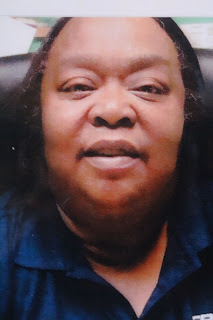 |
| Ernest and Mary McKay Boykin Photo Courtesy: Sharon Boykin |
During the time that my dad transitioned, my cousin Sharon shared family images with me. One of the pictures she shared with me was of our paternal grandparents. My grandfather Ernest was born in 1908 and died in 1978 in Fluker, Louisiana.
He and grandma Mary were the parents of; Ernest Boykin, Jr., Florence, Walter, Lonnie, Francis, Jerry, and Ellis. Grandfather Ernest worked at Kent Piling Co in Fluker, La. He lived in Tangipahoa Parish all of his life. His parents Jake and Martha Burton Boykin were natives of Tangipahoa Parish all of their lives as well.
His U.S. WWII Draft Young Men Card from 1940-1947 stated where he was employed at. Before working at Kent Piling Co, he was a farmer. According to the 1940 United States Federal Census, he obtained a 3rd-grade education. I wanted to see who their neighbors were, I found families with the surnames of; Walls, Thomas, Ards, and Foust.
Grandma Mary was born in 1904 in Mississippi. She was the daughter of Charlie and Florence McKay Williams. The family lived in Beat 5, Pike County, Mississippi on Chatawa Road. She had a brother named William McKay. Charlie worked at the Saw Mill as a wage earner. He rented his home and was unable to read or write.
 Florence was born to Alex and Rebecca Ann Bates Williams in 1858 in Amite County, Mississippi. Alex and Rebecca both died in 1927. Great-grandma's Florence siblings were; Jerry, Florence, Ada, Amanda, and Rosa Williams. Florence father Alex was born in 1857 in Mississippi. Alex and Rebecca were married in 1877. Alex was listed in a mulatto in the 1920 United States Federal Census.
Florence was born to Alex and Rebecca Ann Bates Williams in 1858 in Amite County, Mississippi. Alex and Rebecca both died in 1927. Great-grandma's Florence siblings were; Jerry, Florence, Ada, Amanda, and Rosa Williams. Florence father Alex was born in 1857 in Mississippi. Alex and Rebecca were married in 1877. Alex was listed in a mulatto in the 1920 United States Federal Census.
In 1920 he lived on Magnolia Road on a farm. His mother and father both were born in Mississippi. Alex owned his farm, and he couldn't read or write according to the census. I checked ancestry public trees to see if I could find anyone who is searching the same names. I did find someone with the last names; Powell, Robinson, Guice, Harness, Russell, Hebert Family Trees with Alex and Rebecca in them.

















